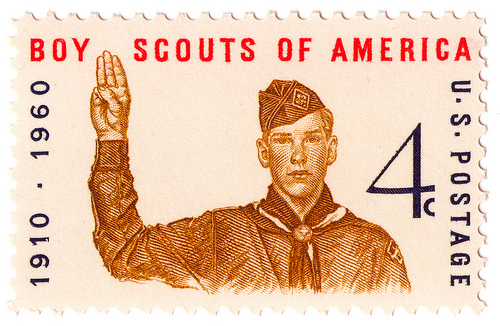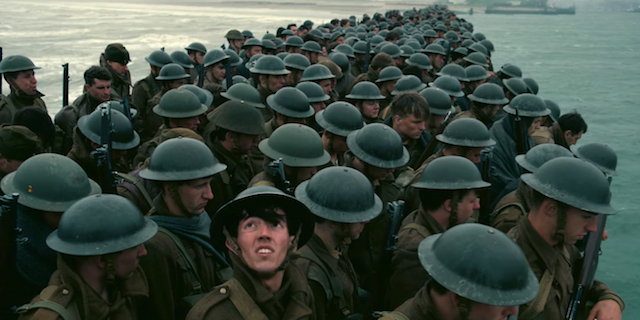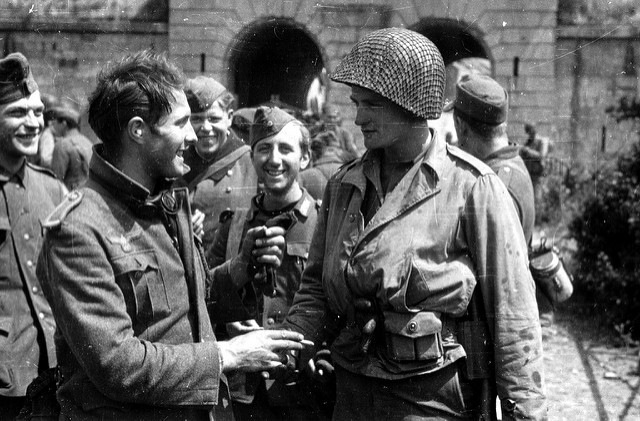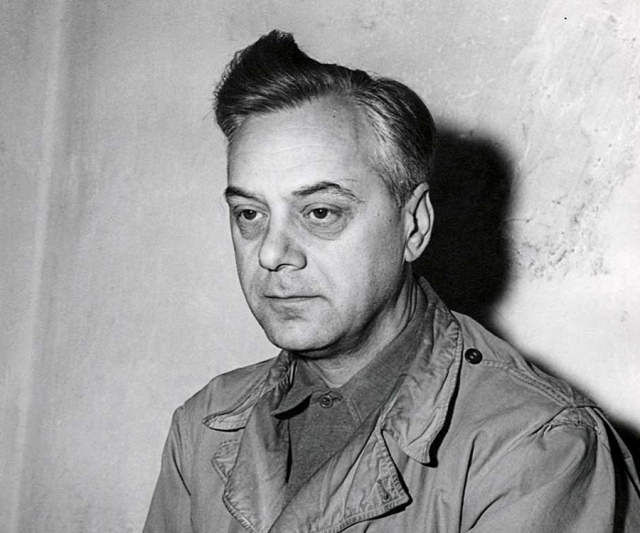The most important trend in recent historiography of the Cold War has been an expansion in interest in subjects outside tthe politico-military, and the economic. Twenty years ago, when Heide Fehrenbach published Cinema in Democratizing Germany, the perception that cultural issues were secondary was still widespread among scholars (particularly historians) of the postwar era.
By the turn of the century, the publication of works such as Uta Poiger’s Jazz, Rock, and Rebels: Cold War Politics and American Culture in a Divided Germany (2000) and Volker Berghahn’s America and the Intellectual Cold Wars in Europe (2002) were harbingers of a turn in the historiographical tide. Since then the literature has burgeoned. Greg Barnhisel’s Cold War Modernists: Art, Literature, and American Cultural Diplomacy is a contribution to this project, presenting a much needed cross-sectional view of the employment of modernist art by American institutions fighting the struggle against communism in Europe.
Art in general, and modernist art in particular, had become extensively imbricated in politics in Europe in the first half of the 20th century. In the Berlin Secession, in the years after 1900, in the painting of Klimt, and the development of atonal music in Vienna around the same time, and through the work of the Dadaists and other contemporary artistic radicals during and after World War I, the capacity of modern painting, sculpture, and music to investigate and to (more or less explicitly) critique various aspects of modernity was a growing concern.
The Nazis clearly understood this, and the fight against modernism in all its artistic forms was a leitmotiv of Nazi cultural policies. Their term for it, entartete Kunst (degenerate art), was made the title of a traveling exhibition that made the rounds in German an Austria in 1937. Opening in Munich in mid-July, the exhibit featured more than 650 paintings, sculptures, and other works seized from German museums, including works by Chagall, Kandinsky, Klee, Grosz, Miró, and others. After its run, many of the works from the exhibition were burned, although with typical irony many others made their way into the private collections of leading figures in the NSDAP.
As the Cold War began around 1948, the role of art in society took on a similarly prominent profile. At the first of the Darmstädter Gespräche, a series of annual symposia on art and politics beginning in 1950, the presentation art historian Hans Sedlmayr met with a raucous response. Sedlmayr, an arch conservative had twice held membership in the Nazi party, although his final resignation in 1942 seems to have had something to do with his learning of the fate of Jews in the concentration camps. He had lost his teaching position at the end of the war, but had not been the subject of an OSS investigation. In 1948, he published Verlust der Mitte (The Loss of the Center), a blistering critique of practically every development in European culture since the middle of the 18th century.
Presenting his arguments in Darmstadt in September 1950 to an audience that included notable such as Theodor Adorno, Alexander Mitscherlich, and Alfred Weber, Sedlmayr’s talk was frequently interrupted by hoots, whistles, and foot-stomping from a crowd whose interests and sympathy with modernist art were clearly out of step with the speaker’s. In one particularly tense moment, Sedlmayr’s assertions were met with a derisive cry of “Heil Hitler!” from the crowd, the power and menace of which in Germany in the immediate postwar years was considerable.
While much has been written in the last few years about Europe as a field for cultural contestation, less research has focused on the role of the US government and leading private charitable institutions in promoting this fight (Berghahn’s book being an obvious exception). Cold War Modernists makes a contribution to filling this historiographical lacuna. Barnheisel takes as his brief the analysis of efforts by various elements of the government, as well as private institutions such as the Ford Foundation and the Rockefeller Fund, to fight the battles of the Cold War in the realms of art and culture.
These became part of a two front struggle, against cultural anti-Americanism and the political power communism in Europe on the one hand, and against the forces of radical anti-communism in American society and government on the other. With regard to the first, the premise that American society operated at a very low cultural level was, if not universal, at least ubiquitous among educated Europeans. The wide reach of this belief presented a fertile field to be tilled amongst communist intellectuals and their sympathizers, who argued that American influence would result in the reduction of the European cultural patrimony to a crass and bumptious consumerism.
As the editorial board of the French Catholic journal Esprit wrote in 1952, “We have, from the outset, warned of the dangers posed to our national well-being by an American culture which attacks the very roots of mental and moral cohesion of the people of Europe. Modernist art and literature, as Barnhisel illustrates, was viewed by many in American intellectual circles, and by their allies in government and the larger private foundations, as a way of illustrating the commitment to freedom that was notionally central to American civilization.
At the same time, attempts to combat European anti-Americanism by presenting examples of modernist art and intellectual production of American provenance aroused intense domestic opposition. This was America in the McCarthy era, during which that (quite considerable) segment of American opinion that takes fright at anything more radical than Norman Rockwell’s illustrations from the Saturday Evening Post was in full cry and energetically abetted by a political class eager to ferret out “communism” in the pursuit of political gain.
Barnhisel notes numerous cases in which the goal of presenting the leading edge of American culture to Europeans was thwarted, either by the claim (as in the case of the journal Perspectives) of insufficiently forceful anti-communism, or by the charge that those producing the works were themselves communists or their sympathizers, or that the works themselves cast American society in a bad light.
One of the great ironies of this period, as Barnhisel notes, is that both the cultural conservatives in the US government and the leadership of the Soviet Union were equally allergic to modernism in art and literature. The Soviets suppressed both art and artists under the aegis of the fight against formalism, what was “formal” in this case being too great a fixation on the actually existing conditions in actually existing socialism.
There is, one could argue, a homology between the stark, morally simplified content of the state approved socialist realism and the homey, “aw-shucks” simplicity of American popular art. In any case, the fact that their communist opponents were dead set against much of the same artistic production that they were did not cut much ice with American cultural conservatives.
And here we come to the central problematic facing those attempting to rebut charges of American cultural cretinism: the charges were by and large true. This is not to say that Europeans were a great deal better. But in the wake of the defeat of European fascism, cultural conservatism, both in its high-brow and troglodytic varieties, found itself on the defensive.
The association of political conservatism with fascism, in many cases due as much to the overlap in personnel as to ideological connection, created a space, however narrow, for the ascendancy of more developed (and to some extent politically radical) modes of cultural expression. While the intensification of the Cold War through the late 1950s and 1960s would eventually redress this balance, the years immediately following the Second World War were a time when conditions for the flourishing of modernism were just about as close to optimal as they would ever be.
Cold War Modernists makes a valuable addition to the grown literature on the cultural aspects of the Cold War. Thoroughly researched and written in a compact and readable style, it is a work that sets itself a viable task and accomplishes it. One might quibble about the fact that the focus of this work is almost exclusively on the politics of production, so to speak, while presenting relatively little in terms of analyzing the way these various projects were received. This is more of a phenomenon of the disciplinary boundaries of modern academia than a failure of the work itself.
Americanists tend to write about America, Europeanists about Europe, and it is a rare piece of scholarship (one could point once again to Berghahn) that overreaches this boundary. Cold War Modernists is a thorough and judicious complement to the already existing literature, one which illustrates the intense political contestation at the heart of the Cold War in the West and one which should promote further study in to the complexities (and ironies) of American cultural politics.
Normal Rockwell photographs courtesy of Wikimedia. Published under a Creative Commons license.







